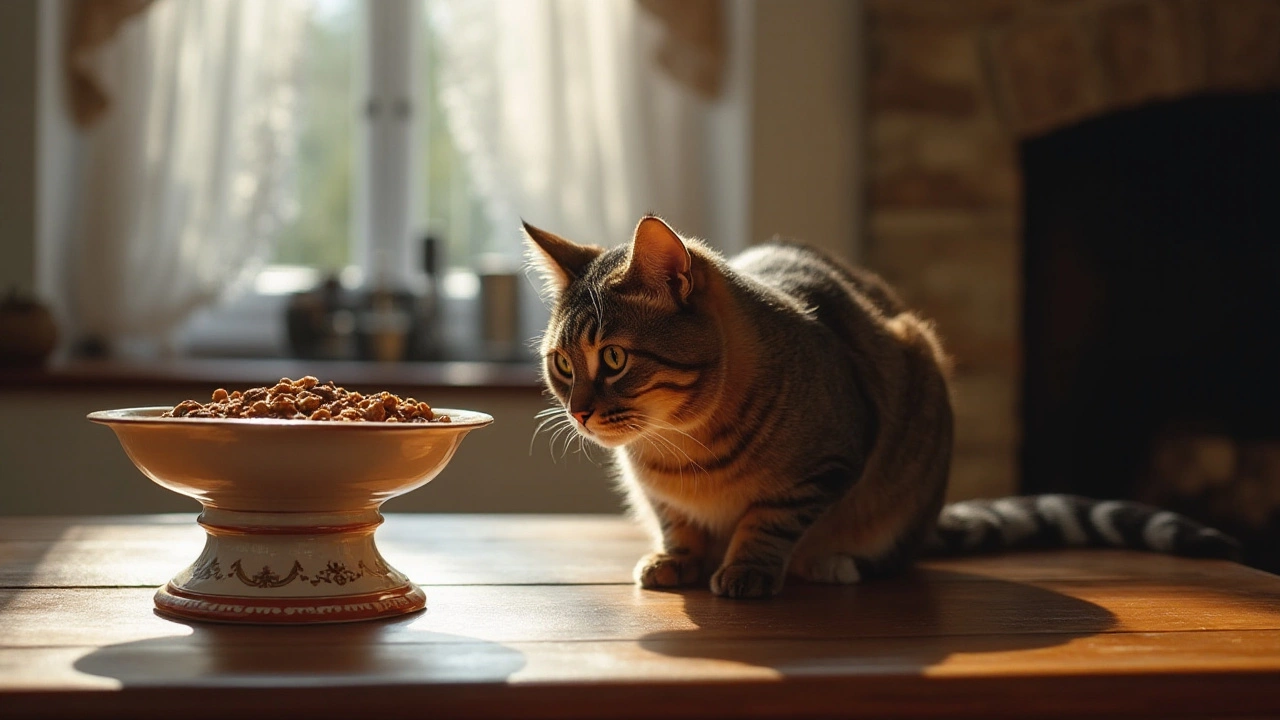Cats Eating Habits: What Every Cat Owner Should Know
Ever wonder why your cat swoops in for a snack at 3 am or seems to ignore a full bowl? Cats have their own quirks when it comes to food, and knowing the basics can save you from needless worries and a chubby pet.
First off, most cats are natural grazers. In the wild they hunt several small prey items throughout the day, so a domestic cat will often prefer several small meals over one big bowl. That’s why many vets recommend feeding adult cats 2‑3 times a day. Kittens, on the other hand, need more frequent meals – about four to six feedings – because they’re growing fast and burn energy quickly.
Do Cats Stop Eating When They’re Full?
Generally, yes. A healthy cat will walk away when the bowl is empty. However, some cats develop a habit of “playing” with food, especially if the kibble is dry and crunchy. They might scoop a few pieces, drop them, and then start again, making it look like they never get full.
Another factor is boredom. If a cat is left with the same dry food every day, it might keep eating just to break the monotony. Switching to a mix of wet and dry food, or adding a bit of broth, can keep meals interesting and help the cat feel satisfied with less food.
How Often Should a Cat Eat?
For most adult cats, two meals a day – one in the morning and one in the evening – works well. This routine matches a cat’s natural hunting peaks at dawn and dusk. If your cat prefers grazing, you can use an automatic feeder to release small portions every few hours. Just be careful not to overdo it; too many snacks can lead to weight gain.
Watch for signs that your cat is eating too much: a rounded belly, difficulty jumping, or a sudden increase in appetite. Overfeeding is a common problem, especially with free‑feeding (leaving food out all day). Even though cats are good at self‑regulating, many will munch out of habit or boredom.
To keep portions in check, measure the recommended daily amount on the food package and split it into the number of meals you plan to give. Use a kitchen scale for accuracy – a little extra each day adds up fast.
Another tip: provide fresh water alongside dry food. Some cats mistake thirst for hunger and will keep nibbling dry kibble. A water fountain can encourage them to drink more and eat less.
When it comes to treats, think of them as a tiny part of the daily calorie count. A few pieces a day won’t hurt, but make sure the treats are low‑calorie and healthy. Swap high‑fat biscuits for freeze‑dried chicken or catnip‑infused toys that keep them engaged without extra calories.
Lastly, pay attention to your cat’s age and health. Senior cats often need more frequent, smaller meals because their digestion slows down. Cats with medical issues like hyperthyroidism or diabetes may have special feeding schedules – always follow the vet’s advice.
In short, understand your cat’s natural grazing instinct, stick to measured portions, and keep meals varied. Doing so will help your feline stay at a healthy weight, enjoy mealtime, and avoid the unwanted habit of endless snacking.
- Morgan Ainsworth
- 0 Comments
Understanding Cat Eating Habits: When is Enough?
Understanding whether cats will stop eating when they are full is crucial for feline health. Cats have unique dietary behaviors that differ from humans, often guided by instinct and environmental factors. This article delves into the feeding habits of cats, exploring how their eating instincts work, potential health implications if they don't stop eating, and tips for pet owners to ensure their cat maintains a healthy diet. Additionally, it highlights signs that may indicate your cat needs a dietary adjustment.
View More
